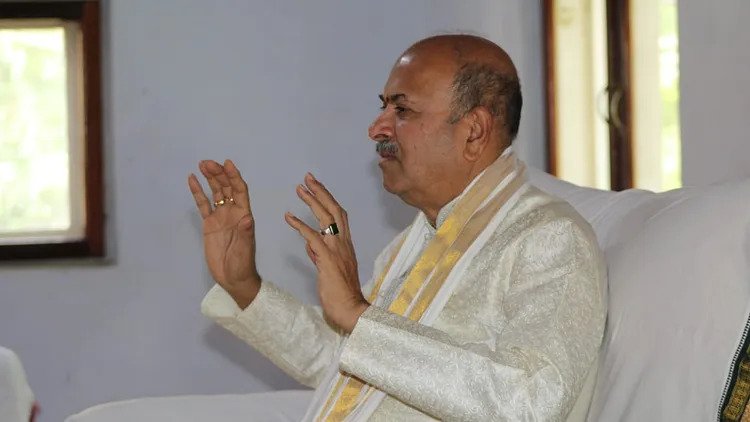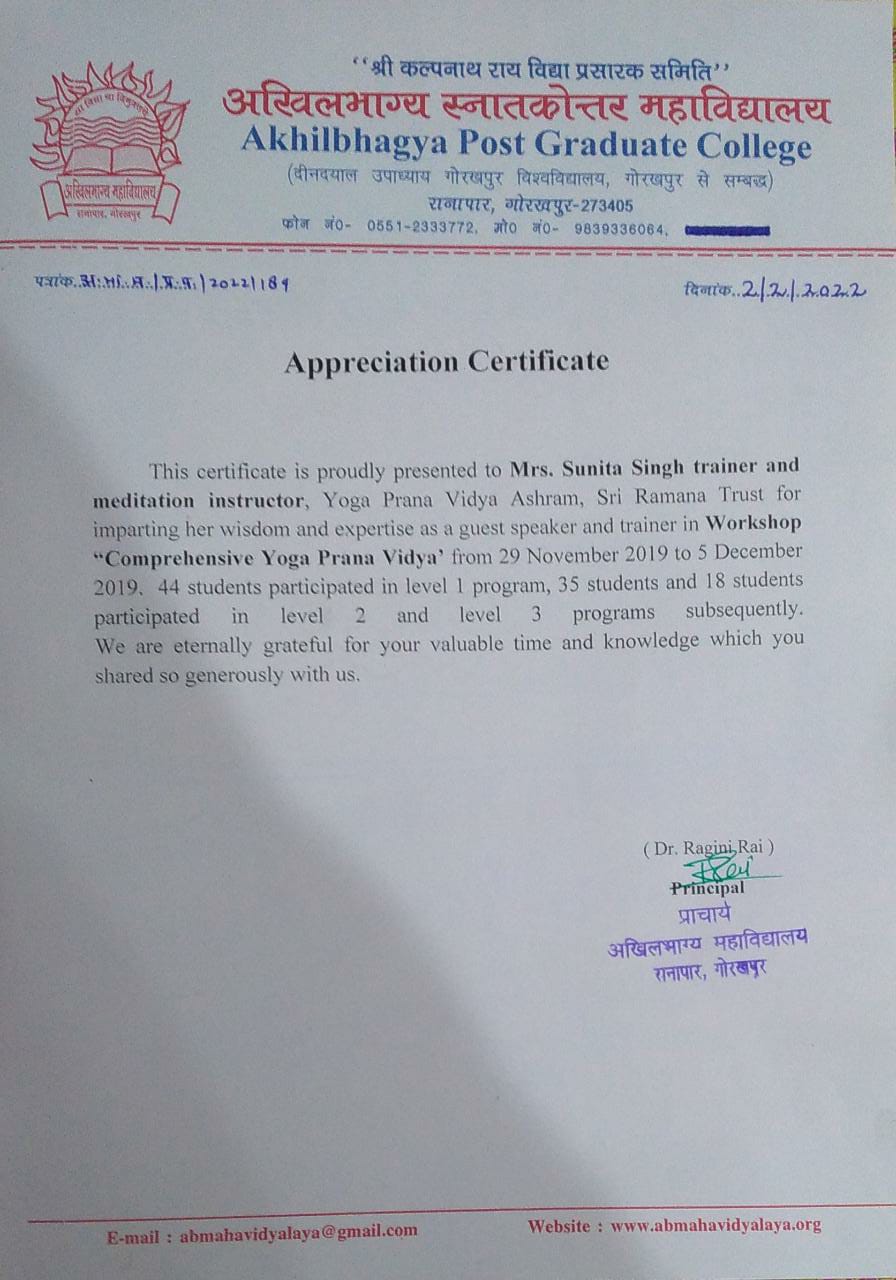Mindfulness Part1

Mindfulness is a state of being aware of the present moment without any expectation or judgment. You may start becoming more aware of your feelings and thoughts. You probably may be able to step back and just accept them. It can help you listen in detail, appreciate others better and not react instantly by being carried away by emotions.
Through practice of awareness meditation, you can cultivate this state of mind that helps you to be mindful whenever you wish to.
Quick Look at Awareness Meditation
Awareness meditation or Breathing meditation in itself increases insight as you progress. This meditation has many stages. The two main stages are object meditation and insight meditation.
1. Object Meditation: This meditation is also known as Samatha Meditation and gives rise to an increase in concentration. In this, the object of meditation is the place where the breath touches the body first while inhaling (or last while exhaling). That is generally the tip of the nose. Concentrate on the object (i.e. keep the mind on the object) as you inhale and exhale. The important points are as follows:
- Do not control the breathing, only focus on the object.
- Be in the present and with the object. Do not go into the past or future. As the mind goes away to the past or future thoughts, don’t worry, but get back to the object of meditation. Slowly, the number of thoughts reduces.
- Do not over stress. Practice regularly. You will slowly develop prolonged concentration or Dharana.
- Doing physical exercises, rhythmic yogic breathing and/or balancing breathing, inner reflection on virtues before meditation; connecting the tongue to the upper palate and maintaining correct posture with spine erect during meditation, makes it very easy and fast to achieve concentration.
- Continue this meditation till you are able to really maintain the focus and get sensation or vibration of the object (nose). Then, you are ready to go to the second stage.
2. Insight Meditation or Awareness Meditation or Dhyana. This is also a kind of Vippasana Meditation. Continue in the same way further from object meditation. Instead of concentrating at one point on the object, shift the awareness from beginning of breathing to end of breathing while inhaling and while exhaling from beginning of exhaling to end of exhaling. Again, do not control the breathing, just be aware of it. This meditation goes through the following stages:
- Shift the awareness from Nose to Navel while inhaling and from Navel to Nose while exhaling, i.e. be aware of beginning and end.
- Once this is achieved, be aware of beginning, middle and end, while inhaling and exhaling.
- As concentration increases, divide the inhaling / exhaling periods into more and more number of points as possible and shift the awareness from one point to other, as you inhale and exhale. Do not get stuck at any point. Move the awareness as if the mind is on a swing. Prolonged awareness is also known as Dhyana.
- As you shift the awareness from one point to the next point, realize the cessation of awareness at the previous point. As you realize the impermanence of the phenomenon, you tend to become equanimous.
- As you continue the effort energetically and with joyful interest, you start realizing everything as transient, impermanent, unsatisfactory and egoless.
- You can continue this Awareness of breathing even while you are getting ready, while walking or in between working, while resting and before sleeping while lying down supine. You come to a stage where you are mindful of your breathing for a long time and body gets the desired rest even though you sleep for a short while.
- The process will lead you to be aware of the inner state all the time, to the permanent removal of hindrances and realization of deeper truth. Thus, you can attain Arhat-ship. Alternately, you may realize voidness (Shunyata) and become a full Arhat. It of course takes time to achieve this state.
Also Read
You will realize that this meditation (unlike most other meditations) has no time limitation. It becomes part of life. The full knowledge of all the terms used is not necessary as long as the procedure is understood and followed. But if you know the meaning of the terms properly and their background, then the destination and the path to the destination appears clear. Then you can aim and put the effort correctly and get faster progress. For this reason, the meaning of the important terms and other interconnected issues and practices that must be followed are brought out in the next part.
The Related Issues
Hindrances of the Mind
All hindrances which distract the concentration in meditation are categorized into five hindrances and are discussed below:
i. Sense Desire: This is mainly a desire for pleasant feeling due to the presence of five senses and thought.
ii. Ill-will: It is an unpleasant feeling of wishing harm to others in various ways.
iii. Laziness: This is a neutral feeling. A lack of will to act or to procrastinate.
iv. Restlessness and Worry: This is the feeling of having done or not done something in a certain manner and subsequent regret.
v. Doubt: It is uncertainty about the practice, whether it is correct or not and whether it will give desired results or not.
The main proximate cause of these hindrances is due to the unwise reflection and unwise attention. The deep-rooted cause is ignorance of truth.
Suspension of Hindrances
During breathing or awareness meditation, these hindrances can be temporarily suspended by the following:
- Becoming aware of the presence or absence of each hindrance and not reacting to it. Just be aware of its presence.
- Searching the cause, if the hindrance is present. This exposure may itself remove the hindrance.
- By wise reflection on the cause or if not possible, diverting and giving wise reflection on something positive.
- Connecting the tongue to palate and clenching the teeth will make the hindrance inactive.

Also Read
The other means that can be adopted in daily life to suspend the hindrances are as follows:
- You must contemplate and evaluate usually at the end of the day on the thoughts, feelings, speech and actions during the course of the day. If there appears to be any mistake in the conduct, then you must resolve not to repeat it again. Affirm several times to do what is right.
- By developing loving kindness and compassion towards all living things.
- By learning to be joyous at others’ success.
- By developing equanimity and tolerating others’ weaknesses and failings.
- By moderation in eating.
- By cultivating friendship with wise persons. (Noble Friendship).
- By practicing virtues or code of ethical conduct as follows:
- Right Speech: Encouraging and kind words, nurturing words. (Refraining from telling lies, saying bad about others, using harsh words and gossiping).
- Right action: To meet the needs of others to your capacity. (Refraining from killing, stealing and sexual misconduct).
- Right Kind of Livelihood and Lifestyle: Moderate and good livelihood and lifestyle for your own health and happiness and not at the cost of others. (Avoid trading in weapons, living beings, flesh, intoxicating drinks, poison and avoid exploitation).
- By doing Service and Charity.
- Development of faith towards practice and path shown by Masters.
You can quickly get concentration in Meditation by applying Law of Forgiveness, (mentally forgiving others and self and asking for forgiveness from others), especially for those who are closely connected. This can be done whenever you experience any disturbance in mind.
Relinquishing of the Hindrances Permanently
Once the hindrances are suspended by above practice, you know that there is no hindrance inside. For relinquishing the hindrances permanently, you must bring in positive liberating qualities (also called Factors of Enlightenment). The mindfulness of breathing at a deep level is itself the first factor.
Also Read
The other six factors are:
1. Investigation of reality: Seeing the reality of impermanence, seeing reality of danger in attachment to any point in insight meditation and understanding the importance of ego-lessness (not the self).
2. Energy: Acting with will and full vigor by realizing the sense of urgency.
3. Joyful interest: To overcome sluggishness that comes during the practice.
4. Tranquility: This is quieting the mind and bringing calmness.
5. Concentration: This is to increase steadiness of mind or one-pointedness.
6. quanimity: Accepting things as they are and avoiding extremes.
By mindfulness of breathing, a balance must be maintained between the first three factors which increase energy and last three factors which increase calmness. For example, if energy is excessive, it will result in the hindrance of restlessness. When you become aware of it; by mindfulness of breathing, you may introduce tranquility factor, thus bringing a balance.
At this stage the meditation becomes extremely simple. You start observing and moving forward without getting stuck and experience mental purity. You must now prolong this state of purity throughout the day. This is done by extending the ability of knowing the presence or absence of enlightenment factors internally, within yourself and externally within others who interact. This prolongation of purity will lead to relinquishing of the hindrances one by one (to greater and greater degree) by removal of ignorance of truth.
The first hindrance which you generally relinquish is doubt. As moral conduct and faith increases to a high degree, you know exactly what to do and practice mindfulness of breathing. Thus, you relinquish the hindrance of doubt. This is the first step. Once you achieve this stage, you will never fall back to the lower levels. You will only proceed further. Therefore, you must put efforts to at least achieve this stage. Once all hindrances are permanently relinquished, you become an Arhat. Arhat is one who realizes the deeper Truth or Shunyata.
Truth
This is one of the most difficult things to put forward. There are different schools of thought in different religions and in some cases within the same religion itself. It was put forward in one of the easiest ways by Buddha and it is referred to as Four Noble Truths. They are as follows:
- Suffering is also there for all beings.
- There is a cause of suffering. (The birth into grosser realm itself is the cause of suffering. You take birth due to unfulfilled desires).
- There is cessation of suffering. (When there is no more lust for life or desire in the last thought, there is no next birth).
- There is a path that leads one to cessation of suffering. This path is referred to as the Noble Eight-Fold Path.The Eight-Fold path has three stages. The first stage is development of virtues or morality. The second stage is practice of meditation and Samadhi. The third stage is gaining Wisdom. One stage aids the upgradation of other stages and progress takes place continuously by practice. Greater morality leads to deeper Samadhi and that leads to greater Wisdom and so on.
They are as follows:
(a) Virtues or Morality.
This is achieved by:
- Right Speech
- Right Action
- Right kind of livelihood including lifestyle
(b) Samadhi or Meditation.
This is achieved by:
- Right Effort with one-pointedness.
- To stop evil thoughts that has arisen (which are within you).
- To prevent further evil thoughts from arising (from external environment or others).
- To develop the un-risen good thoughts (from others).
- To continue good thoughts that have arisen (effort to sustain the good in you).
- Right mindfulness or awareness.
To be aware of the present reality and of the sensation in the body continuously. - Right Oneness.
This is done with the base of purity. Sustaining the awareness towards the path or oneness with the path, moment to moment continuously in the state of awareness or prolonging the state of awareness.
- Right Effort with one-pointedness.
(c) Wisdom.
With the above one can now get:
- Right Thoughts: Healthy thoughts of good will and about the way towards liberation.
- Right Understanding: Understanding the reality as it is. Understanding the impermanence, un-satisfactoriness (Dhukha) and ego-lessness. This means understanding or realizing Four Noble Truths.
We shall continue with the discussion on Shunyata, the mitigation of the karmic effects, achieving arhathood or liberation, in our article next week.
You may try our YPV Sadhana app, which is available for free in various languages. It has guided tracks for purification through breathing exercises and forgiveness practice; and Planetary Peace meditation. These techniques also help in strengthening and upgrading your immune system.
Also Read
YPV Sadhana App
Download YPV Sadhana app to boost immunity, emotional balance and positive attitude towards life.
Yoga Prana Vidya Ashram Sri Ramana Trust Hosur – Thally Main Road Near Ubbanur Lake Thally, Krishnagiri Dist Tamil Nadu – 635118, INDIA
Useful Links
Contacts
Disclaimer :
Yoga Prana Vidya is not intended to replace other forms of healing modalities including allopathy and it is also complementary including alternative.
In case of Severe or Persisting symptoms, refer to a medical doctor and or a Certified Yoga Prana Vidya Healer.
“Currently we do not have any connection / affiliation / association with and are not authorised / represented / endorsed / certified / maintained / sponsored by Master Choa Kok Sui and/or organisations established by the Master and/or subsidiaries / affiliates of such organisations.”

Dhaval Dholakia is a certified YPV healer for 16 years. He is also a mechanical engineer and has worked in Plastic Processing Machinery for 25 years. He resides in Ahmedabad.
Dr. S. K. Singh is a Arhat Trainer having more than 20 years of YPV healing and teaching experience. He is also trained in Kriyashakti & Fengsui and completed the one year intensive program in 2016. He has organized many higher level YPV training workshops and retreats. He completed his Master’s degree in Science and has a doctorate in Environmental Biology. He hails from Varanasi.

Madhu Sudhir is a senior YPV trainer since 2004. She has trained over 2500 students and more than 50 trainers who are also propagating YPV practices. She has done YPV healing for more than 7000 people since 2006. She is the secretary of the Mysore YPV Healers Association since 2011. She is also associated with JSS University – Dental College as a guest lecturer for “Holistic wellness through YPV” for BDS 1st year students. She has also conducted various seminars on YPV teachings. She graduated in commerce from Bangalore University and also has a diploma in architecture. She also works as a Vaastu consultant for businesses, constructions, plots & houses.
Raghu N is a Arhat Trainer having over 22 years of YPV healing and teaching experience. He founded “Master YPV Trust Nanjangud” in 2019 and conducting regular service activities through this trust in his role as President. He also started the first independently located YPV centre in Nanjangud in 2014. He has previously attended the one year Spiritual Intensive Program for 2015-16 conducted in Sri Ramana Trust Ashram. He also has 7 years of experience working as a secretary at “Mysore YPV Healers Association” during which he nurtured many healers. Raghu conducts teachings in Kannada, English and Hindi languages. He has also completed a B.Sc. and B.Ed. from the Mysore University.


1: Name : Lakhsmi Devi

1. Name – Vishakha Karnani
2. address/ centre – 316, Sai Kripa Colony,
Indore 452002, Madhya Pradesh
3. educational qualification – B.A. Loreto College, Kolkata. Then worked as a photo journalist & a freelancer (children photography)
4. any paper presentation – COVID 19 case report in Innovative publication journal. July 2020
5. any specific achievements – part of the organising team in the first SIP , Pune, 2015. Thereafter involved in organising public darshan and Compassionate Parenting and nurturing programs in various cities like Indore, Nagpur, Raipur, Pune, Kolkata and Ichalkaranji (kolhapur)
6. Since 2006. Got introduced to the world of energy in Kolkata and shifted to Indore in 2008 to spread the work in Central India. Currently working in M.P, Chattisgarh, Maharashtra, Rajasthan, North East India.
Radha Ganesh is presently working for Yoga Prana Vidya Organization as Senior Arhat trainer and Ethics committee member. She is a Senior Arhat Trainer and certified YPV healer with over 18 years of experience. She completed the one-year spiritual intensive program at the YPV ashram in Thally. She has been trained in basic, advanced healing and psychotherapy at World Pranic Healing. Radha worked in Unnathi Healing Foundation Trust as a healer and trainer. She also worked in MS Ramaiiah Hospital Pranic Healing Department, Ayush Arogya Dhama. She has taught YPV teachings in several schools and also conducted classes for nursing staff, pharma students among others. She regularly conducts an Arhat Marathon on every last Sunday of the month at Karnataka Pranic Healing foundation trust since last 3 years. Radha has completed her M.A. in English from MG University, Kerala.
Yoga Prana Vidya
| Account Name : | Sri Ramana Trust |
| A/C No: | 566438417 |
| Name of Bank: | Indian Bank |
| IFSC Code: | IDIB000T060 |
| Address: | Police Station Road, Thally, Krishnagiri |



















